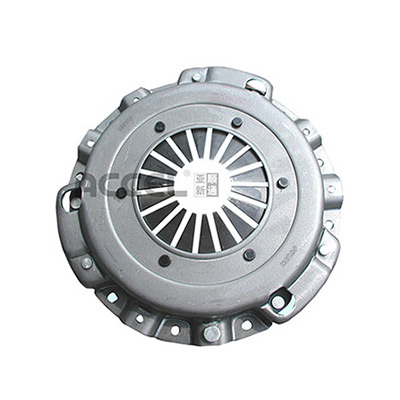- Arabic
- French
- Russian
- Spanish
- Portuguese
- Turkish
- Armenian
- English
- Albanian
- Amharic
- Azerbaijani
- Basque
- Belarusian
- Bengali
- Bosnian
- Bulgarian
- Catalan
- Cebuano
- Corsican
- Croatian
- Czech
- Danish
- Dutch
- Afrikaans
- Esperanto
- Estonian
- Finnish
- Frisian
- Galician
- Georgian
- German
- Greek
- Gujarati
- Haitian Creole
- hausa
- hawaiian
- Hebrew
- Hindi
- Miao
- Hungarian
- Icelandic
- igbo
- Indonesian
- irish
- Italian
- Japanese
- Javanese
- Kannada
- kazakh
- Khmer
- Rwandese
- Korean
- Kurdish
- Kyrgyz
- Lao
- Latin
- Latvian
- Lithuanian
- Luxembourgish
- Macedonian
- Malgashi
- Malay
- Malayalam
- Maltese
- Maori
- Marathi
- Mongolian
- Myanmar
- Nepali
- Norwegian
- Norwegian
- Occitan
- Pashto
- Persian
- Polish
- Punjabi
- Romanian
- Samoan
- Scottish Gaelic
- Serbian
- Sesotho
- Shona
- Sindhi
- Sinhala
- Slovak
- Slovenian
- Somali
- Sundanese
- Swahili
- Swedish
- Tagalog
- Tajik
- Tamil
- Tatar
- Telugu
- Thai
- Turkmen
- Ukrainian
- Urdu
- Uighur
- Uzbek
- Vietnamese
- Welsh
- Bantu
- Yiddish
- Yoruba
- Zulu
សីហា . 20, 2024 21:55 Back to list
Adaptive Speed Belt Technology for Enhanced Performance and Efficiency in Machinery Systems
Understanding Variable Speed Belts Technology and Applications
Variable speed belts are an essential component in many modern mechanical systems, playing a critical role in applications ranging from industrial machinery to automotive engines. Unlike traditional belts that operate at a fixed speed, variable speed belts allow for a wide range of operational speeds, enabling machines to adapt to various workloads and performance requirements. This flexibility leads to increased efficiency and longevity of equipment, making variable speed belts a significant development in engineering and manufacturing.
The Mechanics of Variable Speed Belts
At its core, a variable speed belt system includes pulleys and belts that can adjust their speed and torque output dynamically. The fundamental principle behind this technology involves the alteration of pulley diameters, which can be achieved through various methods, such as mechanical linkages, hydraulic systems, or electronic control systems. By changing the effective diameter of the drive pulleys, the system can modify the speed and torque transferred from the motor to the driven component without the need for gear changes.
One common type of variable speed belt is the V-belt, which has a trapezoidal cross-section and is designed to fit tightly in the grooves of the pulleys. V-belts are widely used in agriculture, HVAC systems, and automotive applications. Another evolving technology includes the use of timing belts, which have teeth that fit precisely into the grooves of the pulleys, providing an accurate speed ratio and synchronization, often utilized in engine timing systems.
Advantages of Variable Speed Belts
The advantages of using variable speed belts are significant. One of the most notable benefits is energy efficiency. By allowing machines to operate at optimal speeds based on the load, variable speed belts can reduce energy consumption, leading to substantial savings over time. This is particularly crucial in industrial settings, where machines often run for extended periods.
variable speed belt

Additionally, variable speed belts can enhance the performance and lifespan of equipment. By minimizing wear and tear through smoother operations, these belts reduce maintenance costs and downtime. Industries that rely heavily on conveyors, for instance, can benefit from the ability to adjust conveyor speeds as needed, improving productivity and reducing material handling issues.
Moreover, variable speed belts contribute to improved process control. For many applications, maintaining precise speed is essential for quality control and product consistency. This technology allows operators to fine-tune speed settings based on real-time feedback, ensuring that each process aligns with desired specifications.
Applications in Diverse Industries
The applications for variable speed belts are diverse and impact various sectors. In manufacturing, variable speed drives are prevalent in conveyor systems, where the speed of material transport must adapt to changing production rates. In the automotive industry, variable speed belts are critical for engine performance, allowing for efficiency in fuel consumption and emissions control.
Another sector that has embraced this technology is renewable energy. Variable speed belts are used in wind turbine systems, where they help regulate the rotor speed, optimizing energy capture depending on wind conditions. Similarly, in aviation, variable speed systems help enhance the efficiency of jet engines and auxiliary power units.
Conclusion
In conclusion, variable speed belts represent a significant advancement in mechanical systems. By offering flexibility and efficiency, they have become indispensable in numerous industries. As technology continues to evolve, we can expect further innovations in variable speed belt systems, leading to even greater efficiencies and performance improvements across various applications. Industries that adopt this technology not only gain a competitive edge but also contribute to a more sustainable and energy-efficient future.
-
Korean Auto Parts Timing Belt 24312-37500 For Hyundai/Kia
NewsMar.07,2025
-
7PK2300 90916-T2024 RIBBED BELT POLY V BELT PK BELT
NewsMar.07,2025
-
Chinese Auto Belt Factory 310-2M-22 For BMW/Mercedes-Benz
NewsMar.07,2025
-
Chinese Auto Belt Factory 310-2M-22 For BMW/Mercedes-Benz
NewsMar.07,2025
-
90916-02660 PK Belt 6PK1680 For Toyota
NewsMar.07,2025
-
drive belt serpentine belt
NewsMar.07,2025

